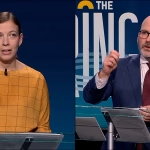Silver price (XAG/USD) surged above the $32.00 resistance level in Friday’s North American session, driven by multiple tailwinds boosting its demand as a safe-haven asset. Uncertainty surrounding the US presidential elections and escalating tensions in the Middle East region have led investors to adopt a risk-averse stance. The ongoing neck-to-neck competition between Democratic candidate Kamala Harris and former President Donald Trump in national polls also contributes to the growing uncertainty in the market.
According to FiveThirtyEight’s daily election poll tracker, Kamala Harris is currently leading in the polls with a 2.4-percentage-point advantage over Republican Trump. Against this backdrop, tensions between Iran and Israel have further escalated, with Israeli Prime Minister Benjamin Netanyahu vowing to intensify attacks on Gaza and Lebanon following the killing of Hamas leader Yahya Sinwar. The heightened geopolitical tensions have dashed hopes of a ceasefire, fueling demand for safe-haven assets like Silver.
While market expectations for the Federal Reserve (Fed) to implement further interest rate cuts of 50 basis points in November have diminished, traders anticipate a more moderate rate-cut path. This expectation has strengthened the US Dollar (USD) against its major peers, with the US Dollar Index (DXY) holding firm just below its 10-week high of 103.90. Despite this, Silver price continues to attract bids as it nears the decade-high of $33.00, supported by upward-sloping moving averages and a bullish outlook depicted by the Relative Strength Index (RSI).
Investors looking to diversify their investment portfolios or hedge against inflation often turn to Silver, a highly traded precious metal with intrinsic value. While less popular than Gold, Silver serves as a store of value and medium of exchange. Investors can acquire physical Silver in coins or bars or trade it through Exchange Traded Funds (ETFs) tracking its price on international markets. Factors influencing Silver price movements include geopolitical instability, recession fears, interest rates, US Dollar fluctuations, investment demand, mining supply, recycling rates, and economic dynamics in major economies like the US, China, and India.
Silver, widely used in industries such as electronics and solar energy due to its high electric conductivity, experiences price fluctuations based on demand in these sectors. The metal’s price trend often mirrors that of Gold, as both are considered safe-haven assets. The Gold/Silver ratio, indicating the ounces of Silver needed to match the value of one ounce of Gold, can offer insights into the relative valuation of these metals. A high ratio may suggest Silver is undervalued or Gold is overvalued, while a low ratio could imply the opposite. Understanding these factors can provide investors with valuable insights into Silver price movements and investment decisions.









